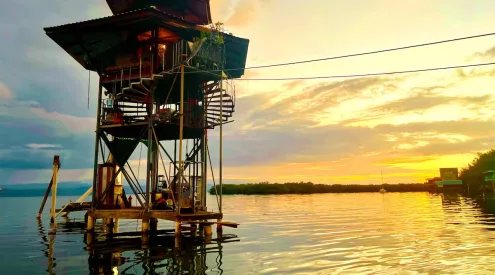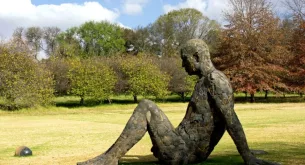Scientists believe they have identified the predatory amphibian that left impressions on a rock face over 250 million years ago as a rhinesuchid temnospondyls.
Farmer David Green contacted one of the authors, Dr Bruce Rubidge 20 years ago. He had discovered impressions on a rock face on his farm outside Estcourt, KwaZulu Natal (KZN).
They were able to identify traces of fish, indicating where the Ecca sea shoreline used to be. The Ecca of Karoo sea was a shallow sea that once covered most of South Africa.
As part of his honours project at Wits University, Dr Groenwald was later recruited to research where the trace fossil came from, a trace fossil being a fossil of a footprint, trail, burrow, or another trace of an animal rather than the animal itself.’
Scientists surmised that the impressions were left by the tail and body of a two-metre-long predatory amphibian.
To identify the creature, the team of scientists needed to track and read the spoor left behind by the animal billions of years ago. They scoured research papers and studied photographs of current-day crocodile and salamander impressions.
The trace fossils captured the prehistoric creature in motion, rather than the usual static bone fossils, making identification particularly challenging.
In the research paper, published on PLOS ONE, Rubidge explained that it’s ‘the first time this sort of swimming behaviour has been recorded for a Rhinesuchid temnospondyls amphibian.’
Scientists believe that the trace fossils probably survived over billions of years due to a mat of algae quickly growing over the impression. The algae would then have made the trace fossils resistant to weathering.
Ancient giant amphibians swam like crocodiles 250 million years ago, says new study @plos @PLOSONE https://t.co/eJ8080VODZ https://t.co/ihLMLeX2XG
— Phys.org (@physorg_com) March 29, 2023
Follow us on social media for more travel news, inspiration, and guides. You can also tag us to be featured.
TikTok | Instagram | Facebook | Twitter
ALSO READ: Scientists uncover super-sized trapdoor spider in Australia


















